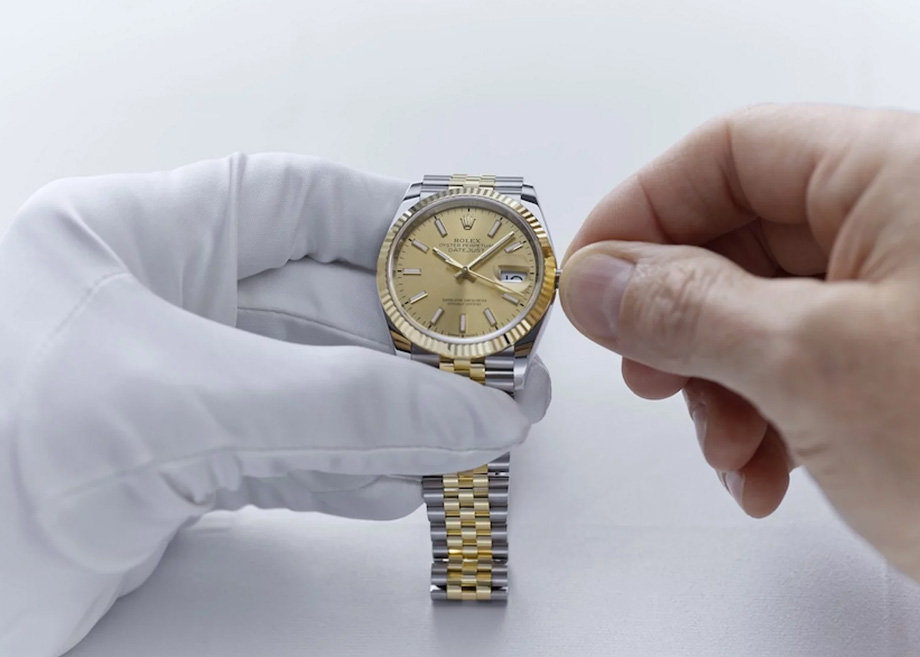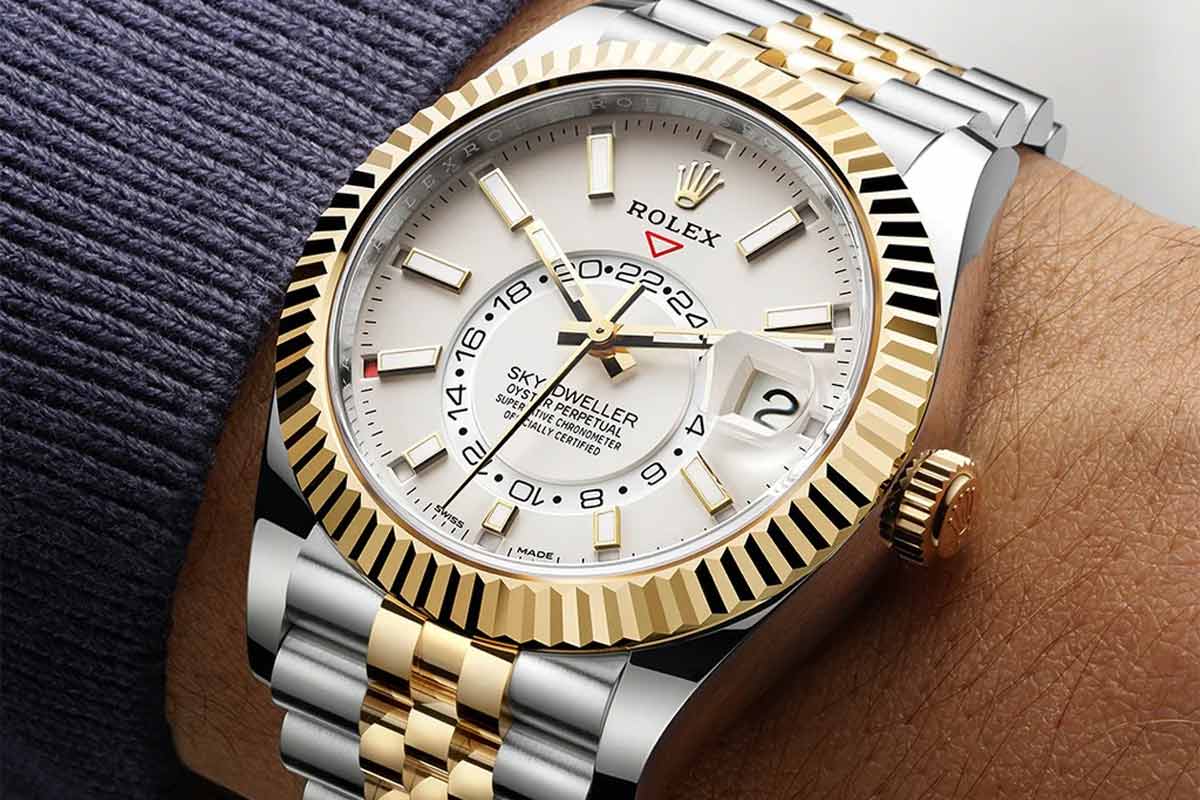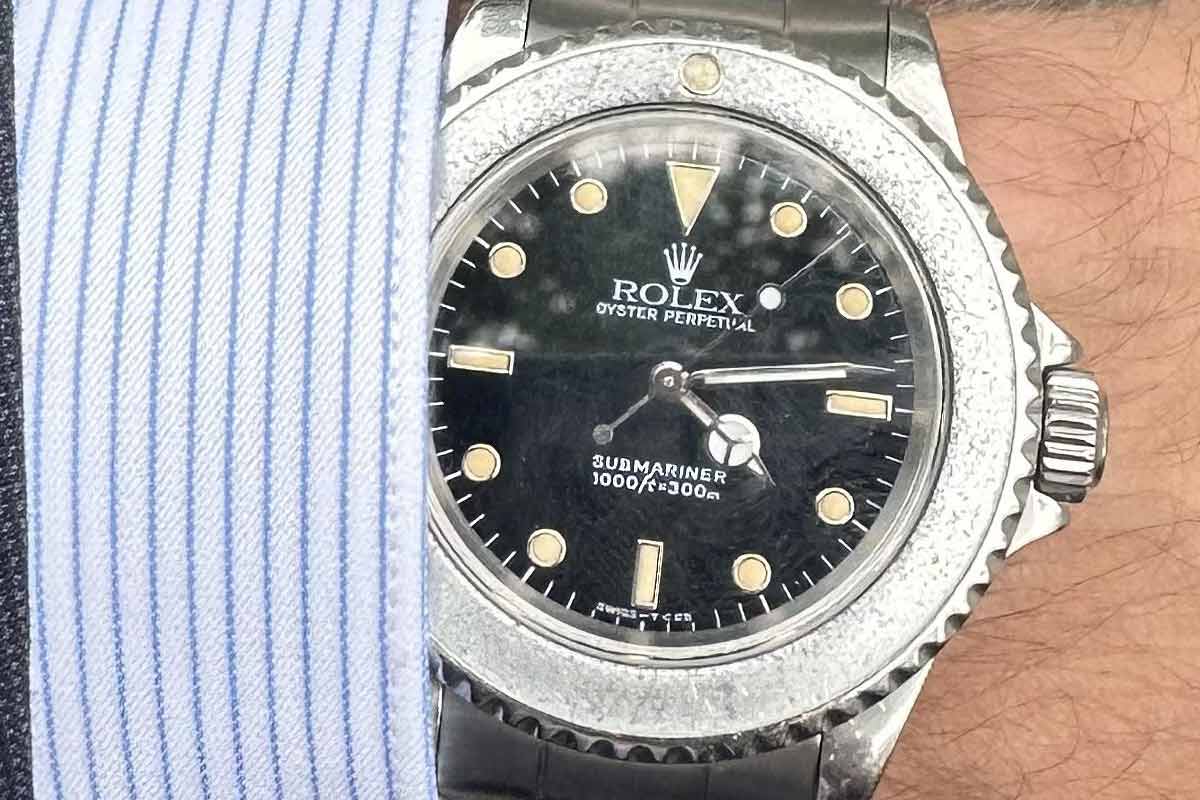

High-end mechanical watches have hundreds of tiny components inside working together. Over time, due to various factors, these movements can start to malfunction. These factors include dust, moisture and temperature variations. Even if the watch has been sitting for a long time and is not put to work, the natural lubricants can degrade, affecting the watch’s accuracy and functionality. Therefore, periodic servicing is highly crucial to preserve the longevity and reliability of the timepiece.
There is no strict guideline as to how often should you get your watch serviced. Brands like Rolex claim that their watches can run without servicing for as long as 10 years. But, these claims are based on lab experiments and not on real-life usage of the watch. In reality, you should consider getting your mechanical watch serviced every 3-5 years.
If it’s a Quartz mechanism, you do not really need extensive servicing. When your watch stops working, just bring your watch to us, and we will do a quick battery replacement. We can even open the watch fully and clean it from the inside just to ensure the longevity of the watch.


While you have come across this page, it is a good time to check all your watches if they need servicing. Just like cars, when watches require servicing, they start showing signs. These signs can be as follows.

Inaccurate Timekeeping
Over a period of time, mechanical watches can start to lose or gain time. Known as time deviations or irregularities, these issues are caused due to the lack of smoothness inside the movement. The parts are not able to move in a certain speed. This can be fixed during the calibration process that takes place during a full service of the watch.

Reduced Power Reserve
Certain issues with the mainspring or other components can lead to a decrease in power reserve. If your watch is guaranteed to have a power reserve of 48 hours and it barely lasts for 10 hours, you should definitely bring your watch to us.

Visible Wear or Damage
Any damage you see on the crown or any of the pushers of the watch will mean that you need to get your watch repaired. At the time of repair, you can also opt to get a full service to make sure your watch lasts longer.
ChronoStreet is committed to offering the best luxury watch service in Dubai. This is why we follow industry standard procedures. These watches are handled by highly skilled watch technicians and are worked on in a clean environment. To work on these watches, our service center is equipped with top-notch machines that are imported specially from Germany and Switzerland. Here’s what a watch goes through in a servicing process.
1. Assessment and Consultation
When you bring your watch to ChronoStreet for servicing, our watchmakers conduct a comprehensive evaluation of the timepiece. We discuss any concerns or issues you've noticed and go through those issues as well. We even keep the watch on a timegrapher to check if it has been facing any time deviations.
Once we have successfully evaluated the timepiece, we give you a quotation for the servicing. If it is a general servicing, you can provide a detailed estimate of the required servicing, ensuring transparency and clarity in the process.
2. Disassembly and Cleaning
The watch is first disassembled, and each component is inspected for wear, damage, or potential issues. The movement is kept aside, and the case, case back, bracelet and buckle are kept inside an Ultrasonic Cleaner.
3. Cleaning and Lubricating the Movement
The individual parts of the movement are then kept in a container which goes into an advanced Elmasolvex RM watch cleaning machine. This machine takes the parts through a set of different liquids, thoroughly cleaning every single part. Once done, the watchmaker takes these parts and starts reassembling them. During the reassembly process, he then lubricates each of these parts using special oils and lubricants.
4. Testing and Quality Assurance
Once the movement is assembled, the watchmaker puts it back in the case and seals the watch. They then put the watch on different tools, including a timegrapher and a winder, to test if it is running properly. They even check the watch after every few hours to make sure if the power reserve of the watch is working as it should.

Chronostreet is the UAE’s biggest luxury watch care centre. Located in the heart of Dubai, we offer various services ranging from repairs, routine service, polishing and even authentication services. Our team of highly-trained watchmakers is always ready to provide you with top-notch luxury watch services.
Opening Hours
